Sunday 21 August – Sylvia
There was a cold change overnight. Apparently these happen from time to time when the winds blow straight up from Patagonia and temperatures drop for three days, in this case down from the high 30’s into the mid-teens. We had planned a 5:45am canoe outing this morning but due to the high winds were awarded a lie-in instead.
At 8am, after admiring the numerous colourful birds around the lodge, we headed off for a boat trip on the Pixin River. It was very peaceful and the birdlife was abundant. Roger is becoming an accomplished wildlife photographer and particularly enjoys capturing birds in flight. He takes some very good shots, but for every great shot there are several deletes, a task he leaves up to me.
At one point the boatman pulled the boat up to the bank and led the way to a tree where we spotted a particularly intriguing bird, the great potoo, an extremely well-camouflaged bird that looks just like a tree branch and seems to sit largely motionless waiting for insects to fly near enough for it to catch.
We passed two neotropic river otter. Unlike the giant otter we had seen before these are solitary animals and generally much harder to spot. Twice we saw small groups of howler monkeys in trees near the river. We also passed a green iguana trying out his gymnastics moves at the top of a tree.
There is another, much larger, lodge nearby and we rode past, noting the many people queuing up for their boat rides. We also had the opportunity to climb up a large observation tower, on this occasion no bird or animal sightings but some great views over the surrounding area.
Our boatman had come prepared with a small bag of fish. In one area of the river some of the birds have become used to the boatmen throwing the fish out for them to catch while us tourists try to photograph them. He tried this trick with kingfishers, terns and hawks.
When we got back to the lodge we wandered over and climbed up the viewing platform next to the jabiru stork’s nest and got great views of the fledglings inside. Two hyacinth macaws played in a tree nearby.
After a restful afternoon we started the long trip back to Cuiaba to catch our flight to Campo-Grande in the south of the Pantanal. Along the Transpantaneira Highway we saw many of the same species we had seen on the way in, including more roseate spoonbills. It was sad to see in one area about eight dead caiman with their tails cut off. Apparently it is likely some of the locals from Pocone had killed them over the weekend as the tail is the best part for eating. While there were still plenty of caiman around it is illegal to kill caiman and it was sad to see so many dead bodies in one area.
We were joined for the drive to Cuiaba by another guide who was quite cynical about Brazil in general. We had previously been told that the law banning hunting in 1967 was because caiman were nearing extinction. He said it was because there had been a military coup in 1965 and the government didn’t want people to have guns. Regardless of the reason, it has certainly helped to turn around the caiman population.
Monday 21 August
Our guide, Caro, picked us up at 7am. The parts of Campo Grande we saw as we drove southwest out of town looked very tidy. With wide streets and lots of new looking factories it looked like a very prosperous city.
The first hundred and fifty kilometres of our journey we drove alongside large cropping farms. Periodically on the road side were groups of shacks, pretty much constructed out of secondhand timber and other discarded materials.
Caro informed us that these were people from the Movement Without Land. These people believe they have the right to take land that is not being used and live on it. Apparently they often take farmer’s land and squat on it. This results in the farmers getting quite upset and sometimes ends up in a gunfight. Some politicians have supported this movement and at times the government has given them land. As they haven’t had the skills or cash to productively farm the land this has ended badly.
At the end of the cropping area, which had been flat, we dropped down into some rolling country with grassy fields and lots of trees. This is cattle country. They run cattle that originated in India here. Nelore cattle with their fat filled humps are good at surviving the dry, food-scarce winters and wet summers. They will graze in water covered fields in the day and sleep on the dry ground in the forest at night.
Arriving at Jardim we dropped our bags at Hotel Victoria and headed to Buraco das Araras, or Macaw Sinkhole. This is a sink hole around a 100m deep with vertical sides and around a 130m across. Two caiman live in the bottom and have done so for about 25 years. They breed every now and then but then eat the young.
This hole is home to the red and green macaw (that’s one bird). With their bright red and blue colours they are quite nice to watch fly around the hole area and even more fun to photograph. Its hard to believe these are all the same make of bird.
We spotted an azara’s agouti near the hole.
And a seldom seen small billed tinamou.
We took lunch at a local farm come tourist centre, which Sylvia will inform you all about in tomorrows episode.
We spent a couple more hours at the sink hole in the late afternoon watching the birds doing there afternoon flybys.
For dinner we went to a local plastic chaired restaurant for some picainu beef which was so tasty it can’t have come from these local Indian cattle.
Tuesday 23 August – Sylvia
This morning we opted not to visit the macaws again. I think Roger has just about had enough of birds now! This meant a much appreciated lie-in. We left Jardim around 9am and headed for Recanto Ecológico Río da Prata, a large ranch that has turned to tourism. This is the same place we had lunch yesterday. The ranch is huge but have set aside some 350 hectares for ecology. Within this space they have a number of natural springs. Along with six others we signed our lives away, donned some unflattering wetsuits and booties and headed off on the back of a truck.
After a roughly 2km trek through some native bush (an interesting experience in a wetsuit and booties!) we arrived at the springs. The water is amazingly clear and there are about 50 species of fish including the famed dorado (tiger fish) and the giant pacu, which only eats fruits and is apparently delicious. We were able to snorkel around the springs and then float downstream until we reached the Rio da Prata. This river is usually also clear but today was cloudy, likely due to some rains upstream. A short boat ride took us back to the truck, passing a troop of capuchin monkeys who crossed over the river on a branch right above us.
After lunch back at the ranch we jumped back in the car for our three hour drive to Poussada Aguape, where we will stay for the next two nights. We had only just left when we came across a giant anteater right near the road. Unfortunately I had forgotten the message that they have very poor eyesight but great smell and hearing and it headed off when I slammed the car door. Not to be daunted, Caro had spotted another in the field behind so we climbed through the fence and made our way through the farmland, eventually getting very close to the second anteater. They are certainly very interesting looking animals, walking on their long claws folded up. By the time we reached the poussada we had seen 15 anteater including two babies on their mother’s backs.
At one point we had stopped to try and get closer to one with a baby on its back when right in front of us we saw an armadillo. Roger had headed off to photograph the anteater and Caro and I got quite close to the armadillo which eventually headed into its hole and proceeded to dig, throwing up great clods of dirt.
Wednesday 23 August
We jumped up on the back of a small truck with seats. First stop was a camp beside the Aquidauana River to see some South American coati which roamed around the camp.
We then headed through a farm gate into a paddock. This place is a cattle farm which runs the tourist business in conjunction with its farm. This is probably the best form of conservation as suddenly wild game such as puma are ensured survival as the value of the odd calf they kill is by far offset by the value of the tourist dollar. This farm went into tourism in 1989, it has been in the same family for 150 years. The 2200 hector property runs 1600 cattle, 70 horses, plus a bunch of tourists.
One of the biggest killers of cattle and horses are the Brazilian lancehead snake; only small it strikes the animal in the head while it is grazing.
Soon we spotted some collaerd peccary grazing in some brush.
As i was returning from photographing them a collared anteater was spotted heading into the bush. The driver went in to the bush heading him of as we waited by his scrub tunnel. It is quite unusual to see these out in the day.
Next we spotted a pampas deer under a paratudo tree (everything tree). This produces various medicines from its bark flowers and trunk.
Cowboys feed salt to the cows in troughs made from the piyva Tree.
Cattle are managed and driven by cowboys on horseback.
Fence posts here are mostly made from Aroeira Tree and last in the ground a hundred years. The tree is now protected.
A crab eating fox was cleaning up the remains of a dead cow. This is the only place where I have seen foxes so unafraid of humans. I am told no-one bothers with chickens around here.
A jabiru stork landed beside us in the paddock. These things amuse me with their three meter wing span; in comparison to other birds they’re like comparing a piper cub with an A380.
They even have Taranaki gates (or are they Panantal gates) here. Caro is great at leaping of the back of the truck to open and close them.
There is a feral pig here that was introduced during the war between Paraguay and Brazil from 1864 to 1870. The Paraguayan army brought them for tucker when they invaded trying to claim the Pantanal. When finally beaten back with the help of the indigenous local population, who were good horsemen, they left the pigs behind. Locals are allowed to hunt these.
We spotted a few birds we had not seen before.
Arriving back at the Poussada (lodge) Aguape we had a stroll around the leaf raked grounds. All the animals are pretty friendly here.
The afternoon revealed a nine-banded armadillo, who scuttled off down a hole to hide from us.
We discovered the biggest predator the giant anteater and other game has are cars and trucks. We have seen a number of dead animals on the roadside in the past couple of days.
Later in the day we went back to the campground and saw some white lipped peccaries.
A local fisherman gave us a piranha to have a look at. With its small sharp toothed mouth one could imagine a slow quite uncomfortable end being pulled apart by a bunch of these little buggers.
The sky is orange as we head back to the lodge for our final dinner. Caro our guide has been outstanding. Suddenly our stint in the Pantanal is nearly over as tomorrow we fly out to Sao Paulo.


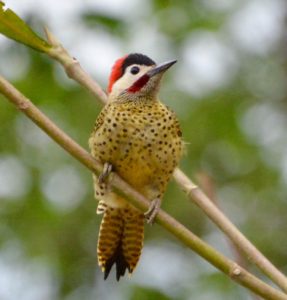
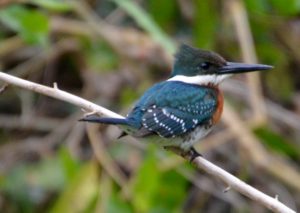
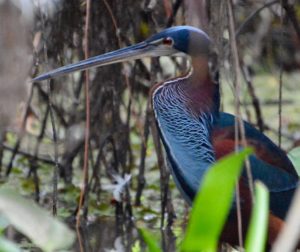
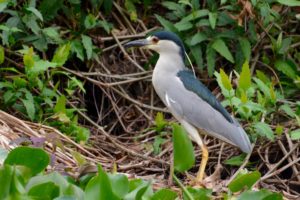


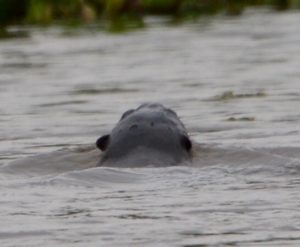
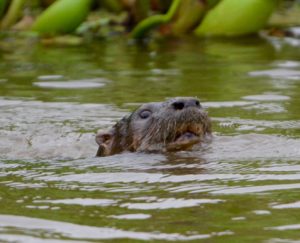



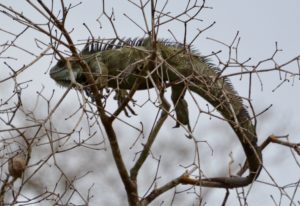





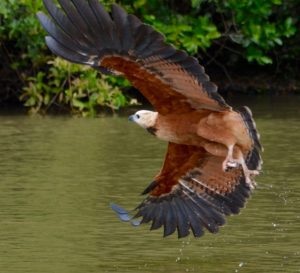



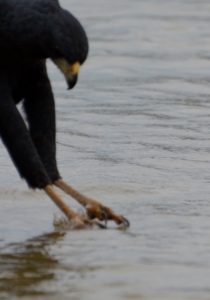

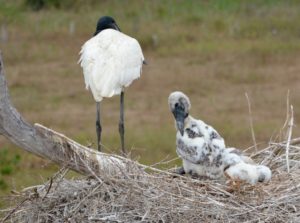

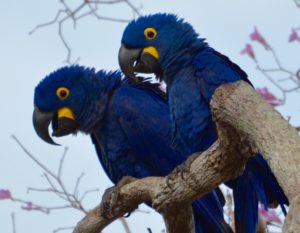





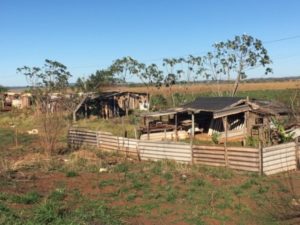
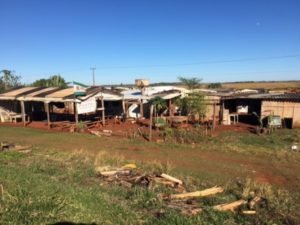

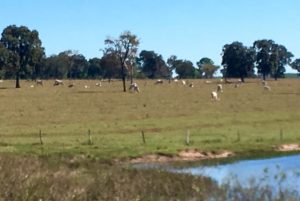
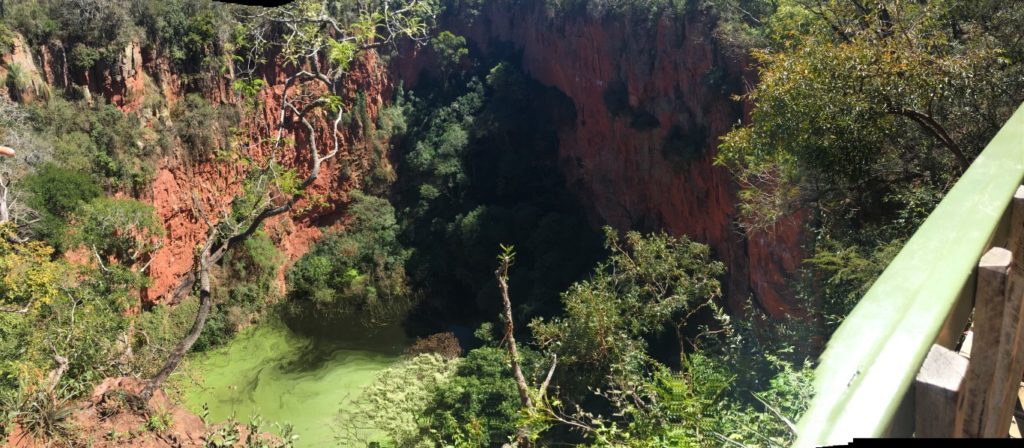
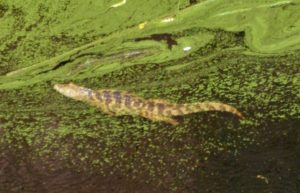




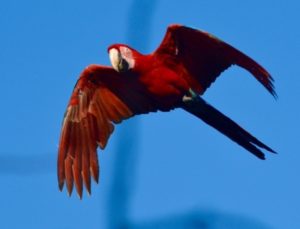

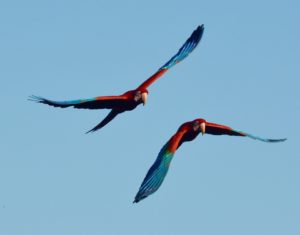




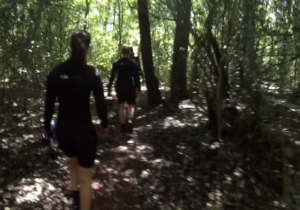
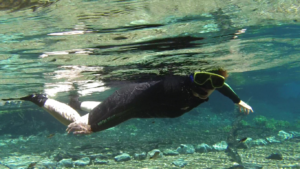



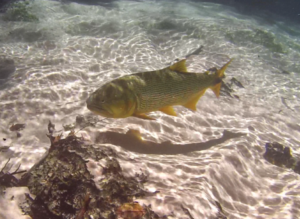
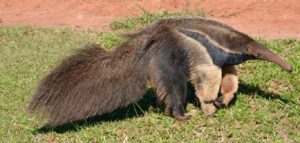





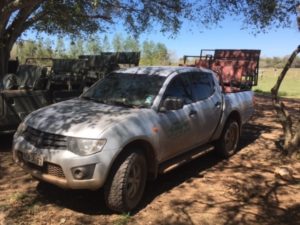


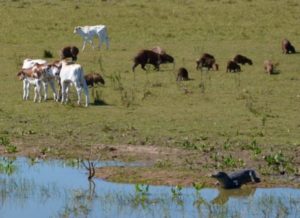

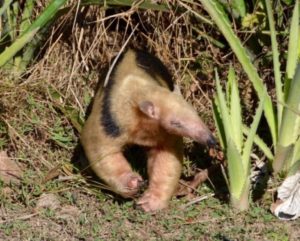

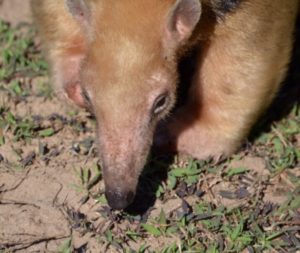


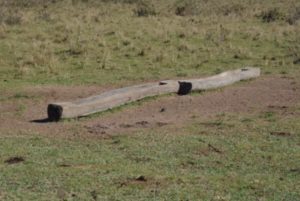
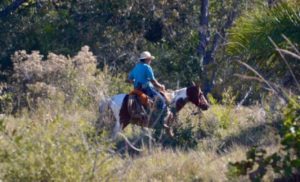



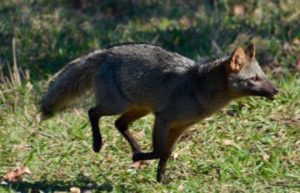




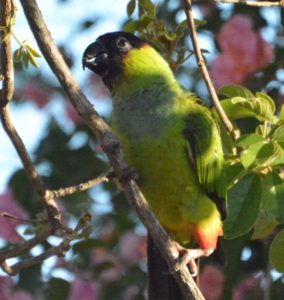


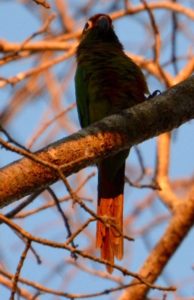



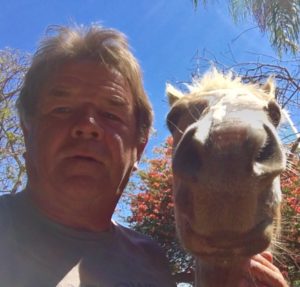
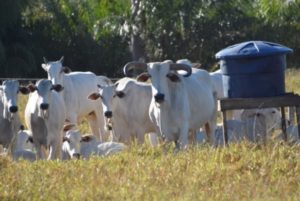


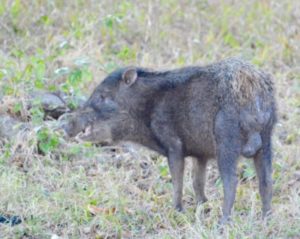


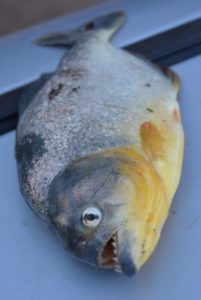

???????????????? Great shots!! All the best for you guys!
Love your work guys keep them coming love the wildlife photos Roger
OMG you guys!! The photos are just soo stunning. Well done! Really loving your blog, thanks for sharing.